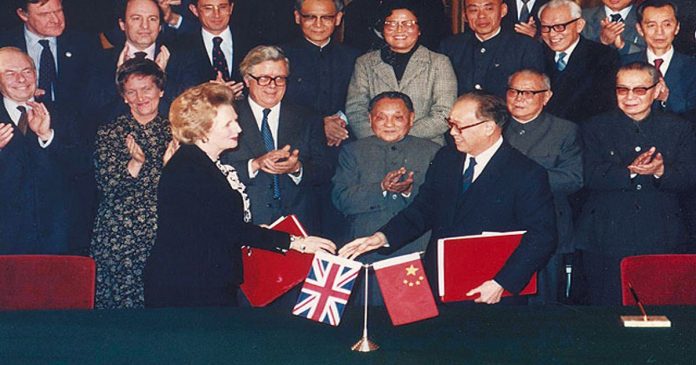Since March 2019, the state of Hong Kong has been in a turmoil due to the uprising protests which have completely distorted the peace in the country. The people are afraid and the youth has all to lose if the extradition bill is passed by the legislature of Hong Kong. Hong Kong is a democracy but not entirely a democracy; ironical. It is a semi-autonomous state which is governed both by Hong Kong and China. Before going into the depth of the protests, let us first examine the root cause which gave spark to this fire.
The Sino-British Joint Declaration
Since the Opium War when British captured Hong Kong by invading the Chinese mainland, they used it as their military staging point. This was fairly dangerous for the Chinese as they had their rival enemy on the door in times of war. There were times in the 20th century when Hong Kong remained no more important to the British and they considered relinquishing the lease back to China but the strategic benefit which seemed much better to the Chinese disregarded their option to give it back to them. In 1949, when the People’s Liberation Army came into power, the West was afraid that the communists will get back Hong Kong, which would prove to be an invaluable post of espionage for them.

Following this in 1984, Sino-British Joint Declaration was signed in which British agreed to return not only the New Territories but also Kowloon and British Hong Kong itself when the lease term expired. Under the declaration’s terms, Hong Kong would become a special administrative region (SAR) under the People’s Republic of China (PRC), and it was expected to enjoy a high degree of autonomy outside of foreign and defence affairs for 50 years, beginning from 1997.
Hong Kong citizens could continue to practice capitalism and political freedoms forbidden on the mainland in accordance with the “one country, two systems” principle under the mini construction of Basic Law. The policy has helped preserve Hong Kong’s civil service, independent courts, freewheeling press, open internet and other features that distinguish it from the Chinese mainland.
In light of the recent developments, it wouldn’t be far-fetched to say that China has had plans to take over the entire state ever since the agreement was signed and has been instrumental in the growth of Hong Kong only to interrupt in its administration and take over its entire economy.
Hong Kong includes 426 square miles of territory in the South China Sea, and it is today one of the most densely occupied and economically independent parts of the world. While the People’s Republic of China rejected the democratization of Hong Kong, the region had become enormously lucrative. Today it qualifies as one of the most significant financial centers and trade ports in the world. This makes it the strongest point for the Chinese to gather the entire control when they are facing an economic downturn in their country.
Beijing’s desire for greater political control has caused considerable friction from time to time between the two countries with people coming out in large numbers to protest as it happened in the Umbrella Revolution 2014. Events since 2004— particularly in the summer of 2019—have shown that universal suffrage continues to be a rallying point for Hong Kong, while the PRC is clearly reluctant to allow Hong Kong to achieve full political freedom.

